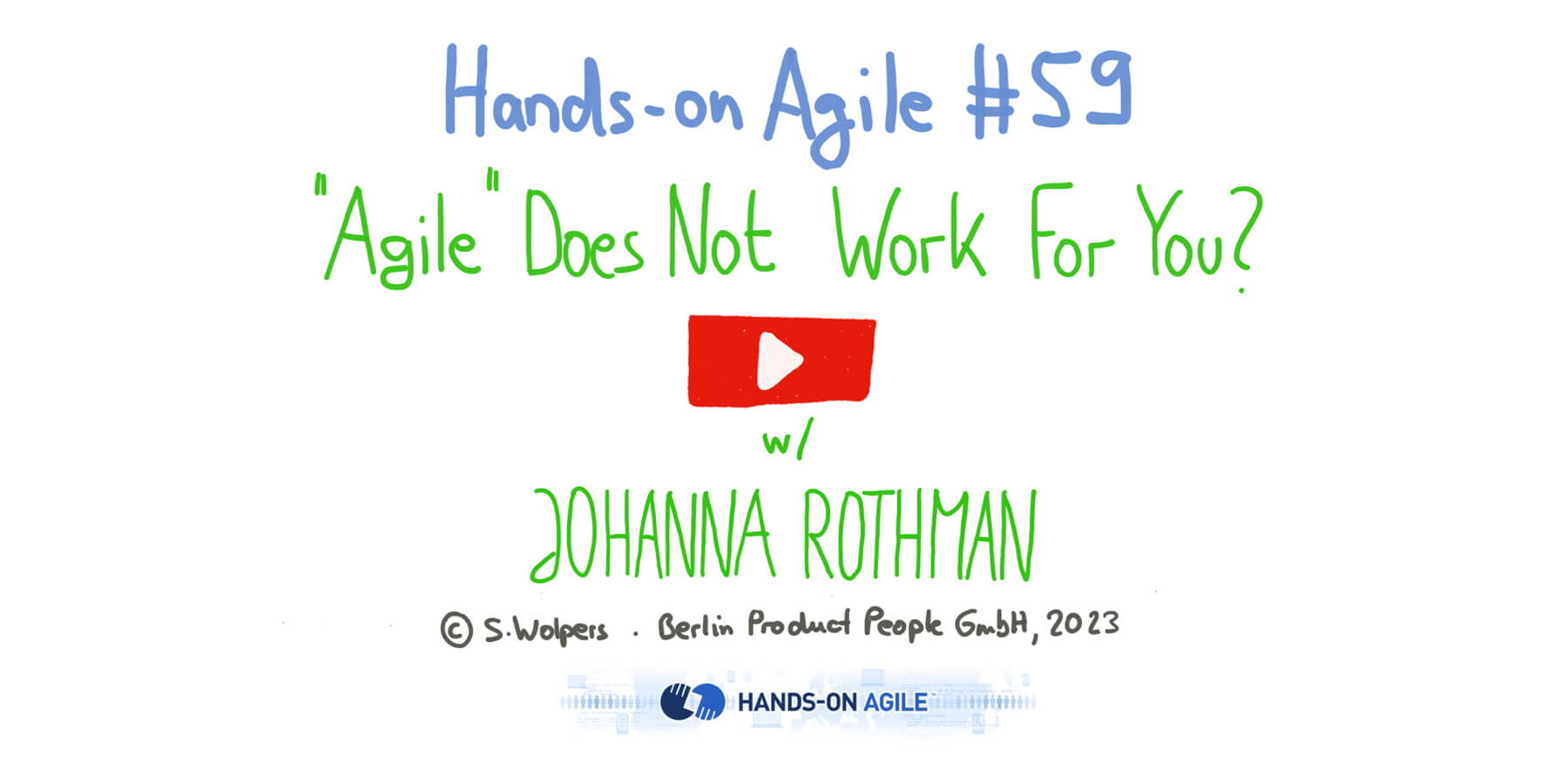“Agile” Does Not Work for You?
How to tackle fake agility with Johanna Rothman, from understanding (product and project) lifecycles to mitigating risk.
Your team is supposed to use an Agile approach, such as Scrum. But you have a years-long backlog, your standups are individual status reports, and you’re still multitasking. You and your team members wish you had the chance to do great work, but this feels a lot like an “agile” death march. There’s a reason you feel that way. You’re using fake agility—a waterfall lifecycle masquerading as an agile approach. Worse, fake agility is the norm in our industry. Now, there is light at the end of the tunnel; let’s delve into Tackling Fake Agility with Johanna Rothman!

Watch the video now: “Agile” Does Not Work for You? Tackling Fake Agility with Johanna Rothman at the 59th Hands-on Agile Meetup.
Abstract: Tackling Fake Agility
Your team is supposed to use an Agile approach, such as Scrum. But you have a years-long backlog, your standups are individual status reports, and you’re still multitasking. You and your team members wish you had the chance to do great work, but this feels a lot like an “agile” death march.
There’s a reason you feel that way. You’re using fake agility—a waterfall lifecycle masquerading as an Agile approach. Worse, fake agility is the norm in our industry.
No one has to work that way.
Instead, you can assess your culture, project, and product risks to select a different approach. That will allow you to choose how to collaborate so you can iterate over features and when to deliver value. When you do, you are more likely to discover actual agility and an easier way to work.
The learning objectives of Johanna’s session on Tackling Fake Agility were:
- Have a clear understanding of the different lifecycles and when to use each.
- Be able to assess your project, product, and portfolio risks.
- Know how to customize a lifecycle based on the unique culture and requirements of the team.
- How to create shorter feedback loops in any lifecycle for product success.
Questions and Answers
During the Q&A part on Tackling Fake Agility, Johanna answered the following questions, among others:
- How do we model risk? Possible approaches?
- How do we measure risk? Possible approaches?
- How do we model value? Possible approaches?
- How do we measure value? Possible approaches?
- No matter how we try to have teams work vertically, we get teams saying that they need a cohesive team or microservice team as they need to build things, and the others will build on top of them. What do you think?
- How can the organization measure the benefit of agility?
- In some software development teams, it seems natural to have the design and mock-up ready before the development, before the sprint planning, and QA done after, sometimes in the next sprint, and it seems to work for them better than doing all in the same Sprint.
- Why do Architecture and Requirements work in dedicated time ranges ahead of increments? Does that hold for other business analysis activities like a risk analysis?
- Based on your experience, what must we do to be valuable Agile coaches or consultants?
- Are there any cases in which using the cost of delay does not work, or would you not use it?
Watch the recording of Johanna Rothman’s Tackling Fake Agility session now:
Meet Johanna Rothman
“People know me as the “Pragmatic Manager.” I offer frank advice—often with a little humor—for your tough problems. I help leaders and managers see and do reasonable things that work. Equipped with that knowledge, you can decide how to adapt your product development, always focusing on the business outcomes you need.
My philosophy is that people want to do a good job. They don’t always know what they are supposed to do, nor how to do it.”


Comments